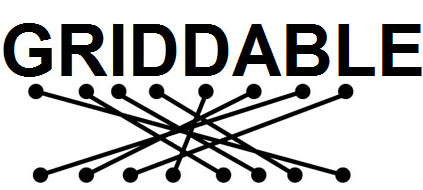Gibbon Slackline Review
Friday, March 19th, 2010 in: News, Reviews
Please note: this review was written mainly for the Gibbon Classic Slackline Kit. I have since tried some other Gibbon kits, including the Jibline, for which I might write a separate review.
Working in an office all day across the street from where I live, I have to make my own opportunities to exercise. Yo-Yoing can only burn so many calories! It’s times like this that I’m so glad I brought my slackline with me. I’ve gotten so used to the setup, I can have a line up or down in a matter of minutes, and in addition to the great workout it gives, it’s been an unexpected social tool. Every time I go play in the park, the local kids climb around on it and ask questions; here it’s best described as 綱渡り, tightrope walking, since “スラックライン” doesn’t quite get through the language barrier. I’m glad to be an ambassador for slackline, although I’m usually sacrificing my own playtime to teach the kids and let them jump around on the line.
Some of the local yo-yo and diabolo players caught wind of my hobby, and have joined in on the fun. Kazuya and Nobu (ディア/ジャグラー系) have really gotten into it, and decided to buy their own line. Good webbing is a little harder to find here, and carabiners are ridiculously expensive, but with a little searching, the guys found that kits are readily available online, and it seems that the most common lines are made by Gibbon. At only about 40-50 bucks, it’s a pretty decent deal for a 15m line. When I first got into slacklining, kits cost more than $100, so it seems that they’re much more affordable than they used to be. I’ve had an opportunity to play around on their new kit a little, and I thought I’d write a little review on it…
First Impressions (+/-)
 Gibbon lines have two notable characteristics: they use a hand crank to tighten the line, and they’re 2 inches wide. Compared to my 1″ line, the Gibbon looks like a webbing sidewalk. The kit came in a branded ditty bag, with the line wrapped into a tight bundle. The line wraps around a tree and feed through a loop, acting as its own anchor, and the crank is a separate unit with a similar anchor system. There’s a movable sleeve to protect the line where it runs through the anchor loop, but unfortunately, nothing is provided for tree protection.
Gibbon lines have two notable characteristics: they use a hand crank to tighten the line, and they’re 2 inches wide. Compared to my 1″ line, the Gibbon looks like a webbing sidewalk. The kit came in a branded ditty bag, with the line wrapped into a tight bundle. The line wraps around a tree and feed through a loop, acting as its own anchor, and the crank is a separate unit with a similar anchor system. There’s a movable sleeve to protect the line where it runs through the anchor loop, but unfortunately, nothing is provided for tree protection.
As an aside, in order to promote good stewardship of the trees that provide us with anchors, I think all kits should come with some sort of protective padding. In some places, you could be fined and have your line cut for not properly padding the tree. I’m still trying to develop a portable effective solution; I’ve been looking for cheap shoulder strap padding for messenger bags, as they’d be lightweight but still provide ample protection for the tree.
New Note: I’ve since purchased a set of Gibbon’s Treewear protection pads, check out my review here.
The crank is heavy duty; it’s seriously solid, but that comes at the price of being heavy as hell and adding a lot of bulk to the kit. I wouldn’t recommend this to the light travelers out there. Compared to my four carabiners, the hardware on the Gibbon line is monstrous. The weight of the crank also affects the way the line is set up, more on that in a second.
Set-up (+)
 Even for the first time, setting up the line was very simple. The line wraps around one tree and the crank anchors on the other one. Feeding the line into the crank and tightening it is really easy, but the crank must be set on the underside of the line or it will twist on you. Releasing the line and taking it down is also relatively simple once you get the hang of it. I was warned by a friend that they had once overtightened a line and had to cut it; fortunately we experienced no such mishaps. We reset the line a couple times, changing trees with relative ease. The easy set-up was definitely a plus.
Even for the first time, setting up the line was very simple. The line wraps around one tree and the crank anchors on the other one. Feeding the line into the crank and tightening it is really easy, but the crank must be set on the underside of the line or it will twist on you. Releasing the line and taking it down is also relatively simple once you get the hang of it. I was warned by a friend that they had once overtightened a line and had to cut it; fortunately we experienced no such mishaps. We reset the line a couple times, changing trees with relative ease. The easy set-up was definitely a plus.
Performance (+/-)
 The Gibbon experience is much different from what I’m accustomed to, and it can be for a few reasons. For one, the 2″ line has a much different feel. It needs to be tightened much more in order to have as much bounce as 1″ webbing, but the elasticity isn’t quite the same. I can’t tell if it’s from the width of the line or the manner in which the anchors work. I wouldn’t say that it was terribly easier or harder than what I’m used to, but it was different for sure. I think my main observation is that with a 1″ line there is much more lateral slack, which requires you to engage your core more. The Gibbon line, especially tightened down, is much more solid and there is only vertical elasticity, which is good for jumping but not much else. Before tightening the line, the loose line did not feel very elastic; it was a little more like walking a long chain than webbing. Properly tightened, straight jumps were relatively easy, with a humorous twanging sound accompanying each hop.
The Gibbon experience is much different from what I’m accustomed to, and it can be for a few reasons. For one, the 2″ line has a much different feel. It needs to be tightened much more in order to have as much bounce as 1″ webbing, but the elasticity isn’t quite the same. I can’t tell if it’s from the width of the line or the manner in which the anchors work. I wouldn’t say that it was terribly easier or harder than what I’m used to, but it was different for sure. I think my main observation is that with a 1″ line there is much more lateral slack, which requires you to engage your core more. The Gibbon line, especially tightened down, is much more solid and there is only vertical elasticity, which is good for jumping but not much else. Before tightening the line, the loose line did not feel very elastic; it was a little more like walking a long chain than webbing. Properly tightened, straight jumps were relatively easy, with a humorous twanging sound accompanying each hop.
I would imagine that for beginners it would be easier to get started on. Kazuya and Nobu both made quite a bit of progress compared to their first time on my line the previous week. I’m concerned that the Gibbon doesn’t provide the same level of intensive core workout my 1″ line does, but that’s not the main point of it. What’s important is the fun factor! So, is the Gibbon fun?
Conclusion (+)
Overall, the setup is quick, easy and unobtrusive, the line has plenty of bounce (when properly set up), and it’s still fun to play on. It’s still a slackline, just a different experience. For those accustomed to a Gibbon line, transitioning to a 1″ might be a bit of a rude awakening because it requires a different concentration. Even so, I’ve been slacklining on 1″ webbing for years and I wouldn’t say that the Gibbon was incredibly easy either. They both take their getting used to, and I think people will prefer whatever they’re used to. I know I still do.
That said, the Gibbon is a decent piece of kit and I’d recommend it to beginners who don’t want to fuss with carabiners and don’t mind a little more heft in their line. I would suggest you try a 1″ and a 2″ line before you make any purchases to be sure of what your preference is. For a startup kit, the price is right.
Slack on!
Here’s a little video of some of the sponsored Gibbon-lovers monkeying around:
httpvh://www.youtube.com/watch?v=bu2UJcoZYN4
Check out my Review of Gibbon’s Treewear




















I agree the 2 inch is different in its’ lateral range, but Gibbon makes a surf line that swings like crazy! They also have tree protection… check it out
http://www.gibbon-slacklines.com/english/products/treewear/treewear.html
Interesting, Jaime, thanks for the link! The tree protection looks pretty good, I didn’t know Gibbon offered that. I also wasn’t aware that the jibline was extra bouncy. The line my friend bought was a classic, which definitely didn’t allow for the kind of tricks in the contest video I posted. I still prefer my own line but I gotta hand it to Gibbon for their range of products and for promoting the sport!
Hello there!
I read this and saw that you were worried about damage to the trees…..we use old carpet samples which you can fit into a rucksack, and an extra layer of cardboard just in case, it works really well and is very light to carry. You can now buy webbing made by gibbon to protect the trees…..this is extra light but i don’t think it protects the trees too well.
You can also use a camping roll mat (the spongey ones) cut to size if needed……hope that helps 🙂
Thanks Janet, I appreciate your comment 🙂
I’m traveling around rural China at the moment, so it’s hard to find the right sort of materials, but the search continues. I’ll keep your suggestions in mind, and keep my eyes open for something appropriate.
I’ve since purchased a set of Gibbon’s Treewear, and have written a review here: https://griddable.com/?p=4931
One thing that Gibbon should improve is the rubbing of the line on ratchet as the line winds in to the ratchet. The outter edges of the line starts to fray after a while. By analyzing the ratchet i noticed sharp edges. They need to fix this problem by deburring and smoothing out where the outside of the line makes contact with the ratchet.